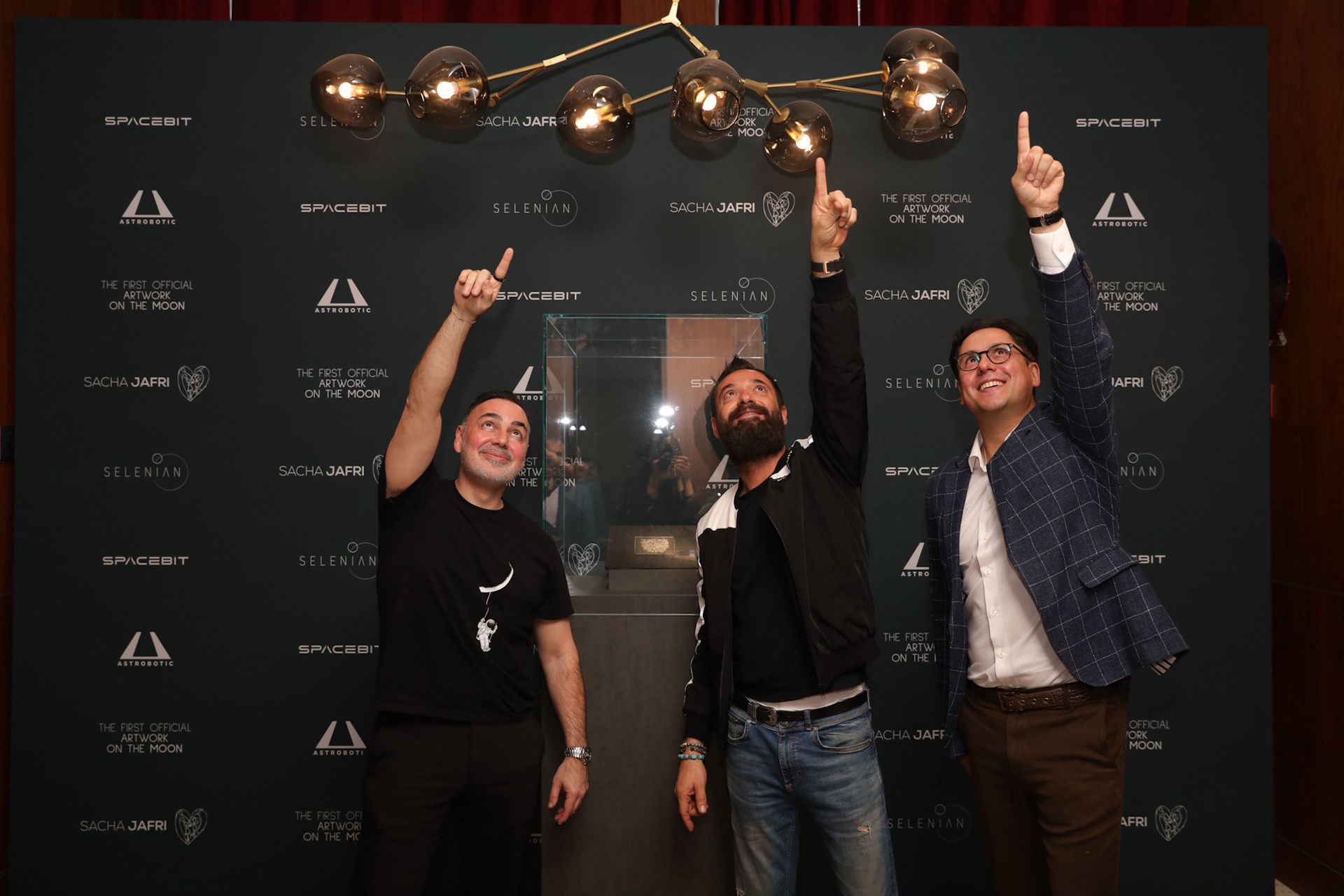Last year, the artist Sacha Jafri made headlines with what was described as the world’s biggest painting, the astronomically large canvas The Journey of Humanity, which sold at a charity auction for $62m. For his next feat of hyperbolic artistic achievement, Jafri is trying his hand at actual astronomy.
Today at a press conference in the US Pavilion at the 2020 World Expo in Dubai, the British artist and a group of space industry executives unveiled plans to permanently install a work by Jafri on the moon. The artwork, We Rise Together – with the Light of the Moon, features a heart-shaped design with text executed on aerospace-grade aluminium covered with gold. It has been dubbed the “first official artwork on the moon”, although what exactly makes it “official” is unknown.
What is known about We Rise Together is that it will be the first artwork sent to Earth’s natural satellite by way of the National Aeronautics and Space Administration’s (Nasa) Commercial Lunar Payload Services (CLPS), which offers transportation services for commercial and nongovernmental organisations to conduct research on the moon. The artwork is being sent up by space exploration firm Spacebit and Astrobotic Technology, which offers delivery services to the moon, while the mission’s curatorial components are being handled by Selenian, a company that specialises in the very niche (but presumably expanding) field of curating art in space.

Selenia co-founder James Khazaei (left), artist Sacha Jafri (centre) and Spacebit founder Pavlo Tanasyuk (right) point spaceward during today's press conference in Dubai Photo courtesy Selenian
Jafri’s artwork, which has been made to withstand extreme conditions including temperatures as low as -173°C and up to 123°C, is due to land on the moon later this year. A second version of the work will be sold at auction. And of course there will be NFTs (non-fungible tokens), too—one to commemorate each of the mission’s five steps, from the rocket launch to the moon landing to the aluminium plate being left to “rest in the solitude of the moon eternally”, per a press release. Some of the sales proceeds will be donated to unspecified charities.
Space art aficionados may scoff at the claim that Jafri’s work is the “first official artwork on the moon”. After all, artist Paul van Hoeydonck’s Fallen Astronaut—a 9cm aluminium sculpture memorialising astronauts who died in the name of space exploration—was placed on the lunar surface during the Apollo 15 mission in 1971.
A work of significantly less official standing (to the point that its presence on the moon has never actually been confirmed) is the infamous Moon Museum (1969), a miniscule ceramic tile etched with images by Robert Rauschenberg, David Novros, John Chamberlain, Claes Oldenburg, Forrest Myers and Andy Warhol that was allegedly clandestinely affixed to the leg of the Apollo 12 mission’s lunar module.


